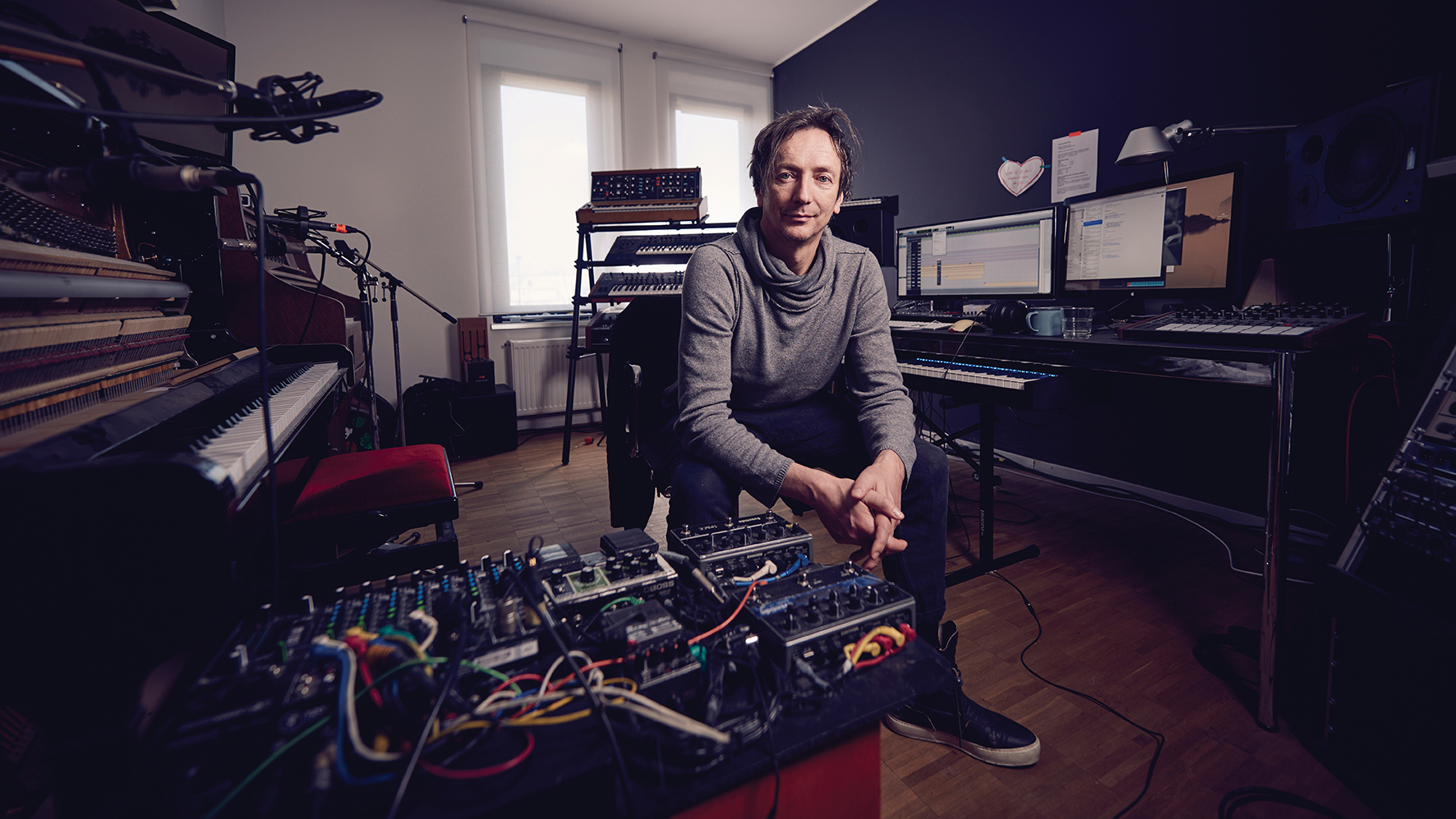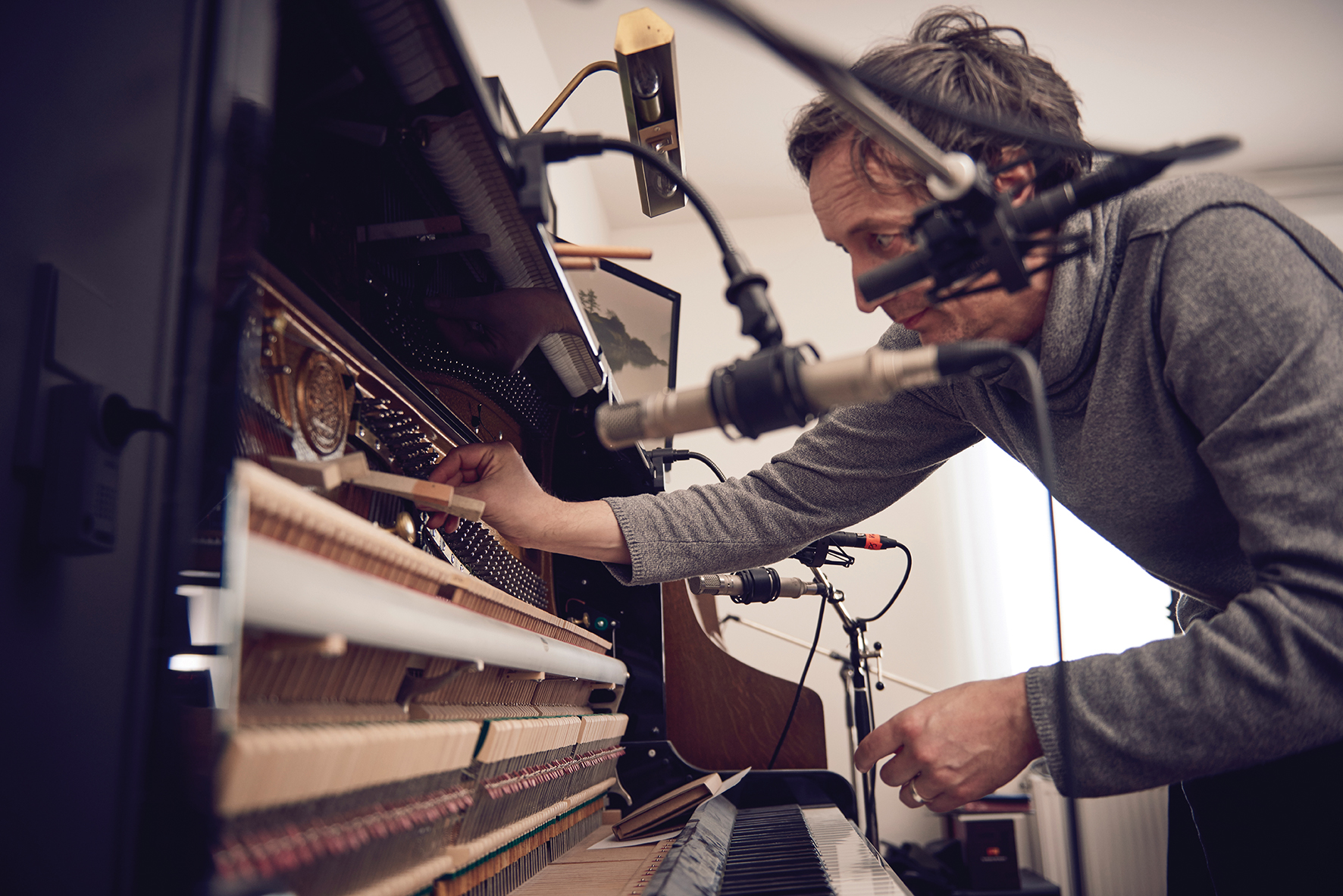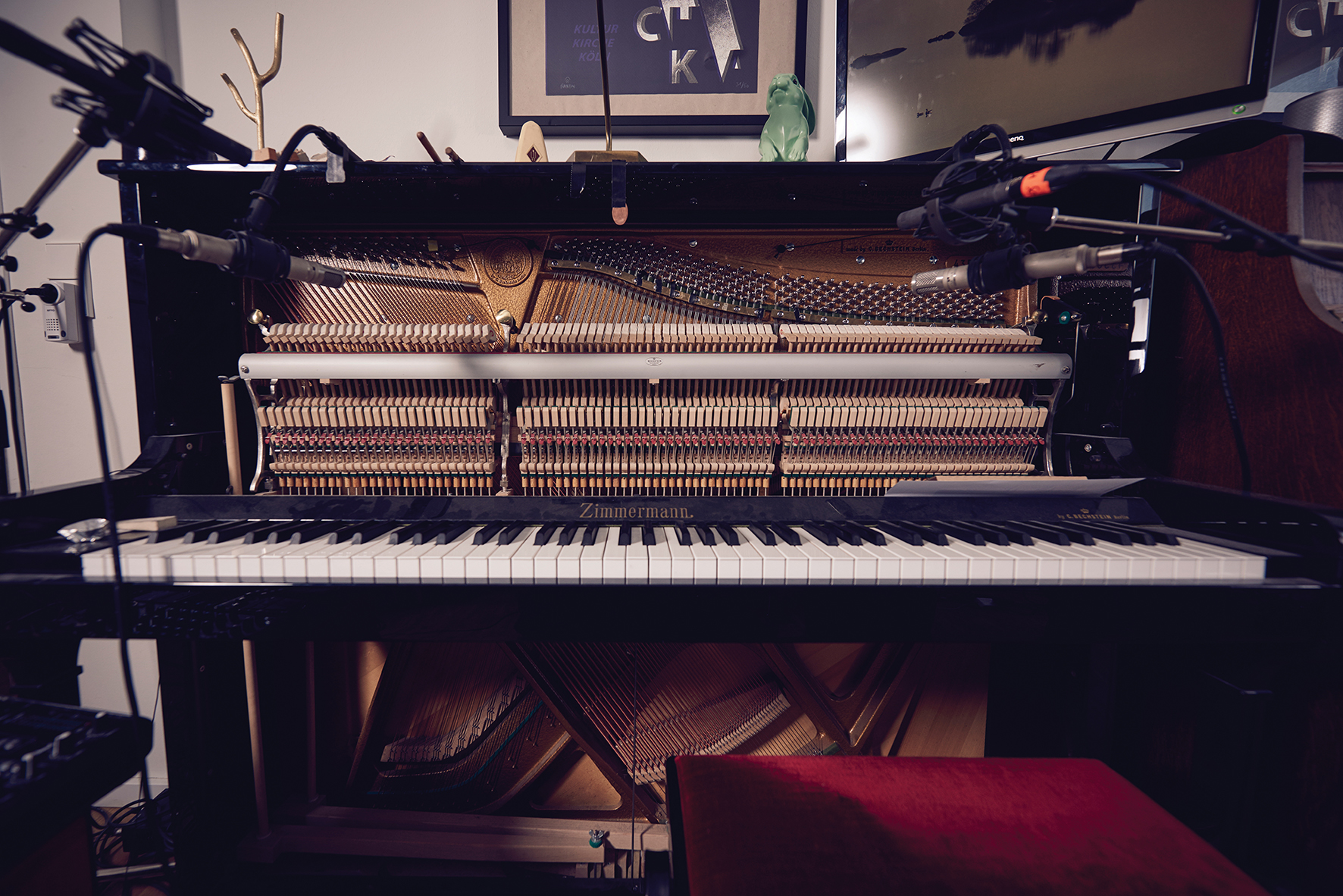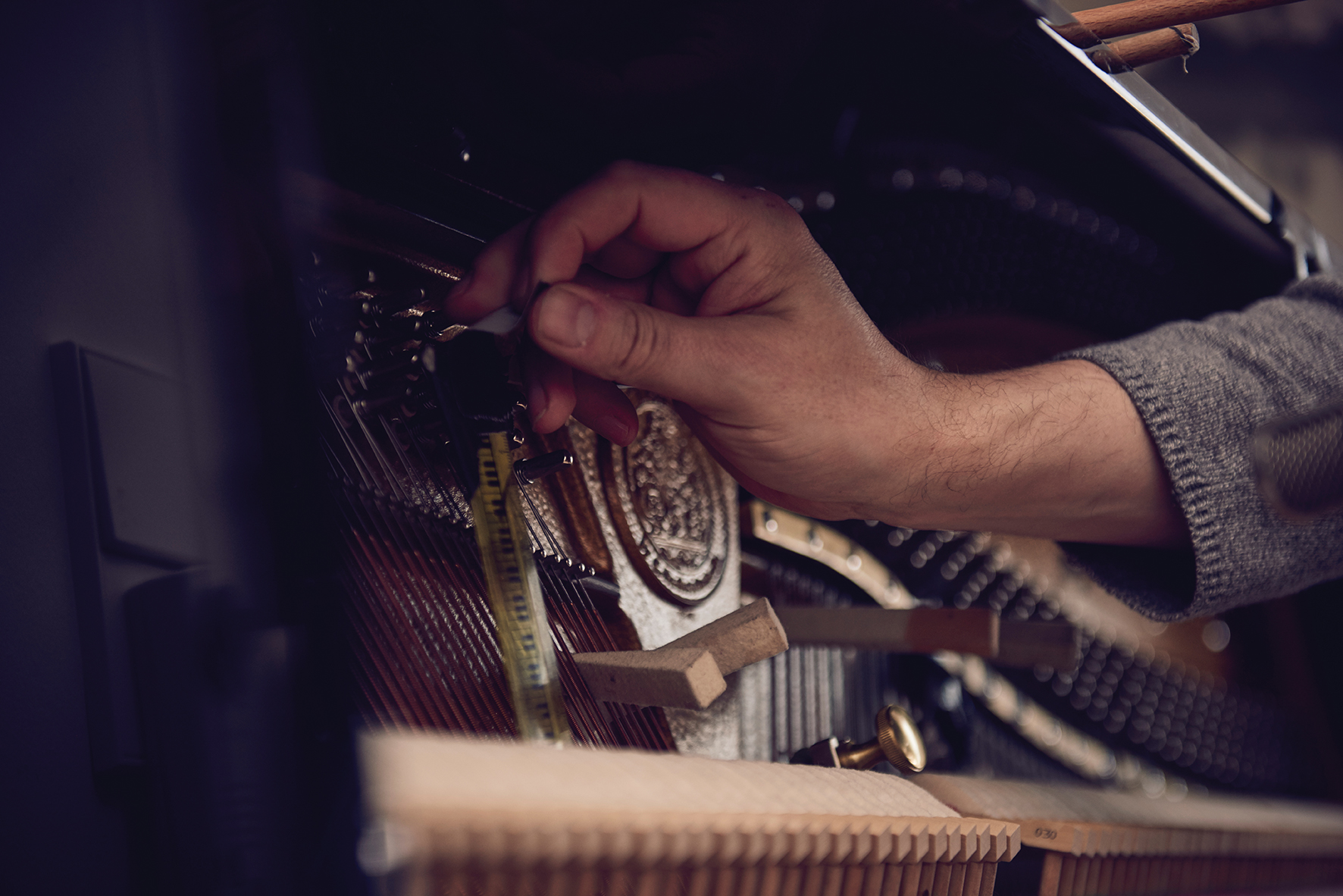Hauschka on discovering new sounds with prepared piano and effects pedals: "I wanted to make experimental music without a laptop - creating sounds with a piano that had the same qualities as electronic music"
Oscar-winning composer and producer Volker Bertelmann on prepared piano, the need for optimism and finding room to experiment

The career of German musician Volker Bertelmann can be difficult to define. Classically trained on piano at a young age, he spent his youth as a part of various rock, hip-hop and techno acts, before eventually beginning his solo career as Hauschka with 2004’s Substantial.
Under that guise he has released a string of albums that touch on elements to classical, ambient, orchestral as well as glitchy electronics. “I would describe my music as contemporary piano music,” Bertelmann explains, when pressed to try and pigeonhole his work.
“I have my own tonality. But I feel the most comfortable in a kind of experimental space. If I feel there’s suddenly a sticker on my shoulder, like the ‘neoclassical’ sticker, I’m the first one who tries to shake that off.”
The one defining, mostly consistent element of Bertelmann’s music has been his use of prepared piano; the technique of modifying the instrument by placing objects on and around its strings to alter the tonality. It’s a technique he uses to blur the line between melodic and percussive sound.
Alongside his work as Hauschka, recent years have seen Bertelmann making waves of increasing size in the worlds of film and TV, culminating in recent BAFTA and Oscar wins for his expansive and emotive score to the anti-war epic All Quiet on the Western Front, which is set among the German lines at the end of World War 1.
Earlier this year, Bertelmann returned with his first Hauschka album in four years, Philanthropy, a self-described optimistic record, inspired as a response to the Covid pandemic, climate anxiety and global conflicts. “I had the feeling that I wanted to dedicate the record to acknowledging life, and acknowledging people,” he tells us, speaking from his Dusseldorf studio. “My feeling was that it’s maybe a good time to make an optimistic record…”
Do most of your tracks start with the piano?
Get the MusicRadar Newsletter
Want all the hottest music and gear news, reviews, deals, features and more, direct to your inbox? Sign up here.
“It’s me at the piano with an effect pedal board, where I have a lot of guitar pedals that are creating textures on top of what I’m playing. Or some are loopers that are changing the tonality. What I’m trying to create are loop chains of different sounds, which sometimes I’m distorting too, but I record the pure piano and an effect track on top of that, so that they’re separated. So whenever I feel that I just want to use the effect track, I can mute the real piano, but I also can keep it in there. That’s my basic recording process.
Sometimes I wake up in the morning and have a coffee and then I’ll go straight into the studio and press record. When I’m finished, I don’t look at it
“Sometimes I wake up in the morning and have a coffee and then I’ll go straight into the studio and press record. When I’m finished, I don’t look at it. I just put it in a folder and let it sit there. Those ideas that were in that folder, at some point last year, I started to go through them and say, ‘This one is a good one. This one is bad. This one I like’, and so on.”
Did most of the tracks on the album come from those initial improvisations, or did you go back into the studio to rerecord certain parts?
“Some of them I looked at and decided ‘OK, this one needs an overdub.’ There are two pieces on the album that I wrote with drummer Samuli Kosminen. That’s actually where some of the initial ideas came from. We met in Finland in Helsinki. I think we recorded up to 40 tracks. We booked a studio for one day and just played and played and played. We were in separate rooms so I could mute the drums and so on.
“Once that was done, I went back home and I went through those 40 tracks. Two stuck out to me, because they fitted with my current feeling of how music should sound. Then I added, for example, a couple of low sub basses to give them a little bit more punch. I cut a few things from the tracks too, because improvisations tend to be too long for a record.”

Tell us about the piano – how are you preparing it and how much does that vary between records?
“Well, the basic preparations are the same. I used a few more muted percussive things this time. I worked a lot with gaffer tape rolls, which I put on the strings so they didn’t sound much like a piano. The sound created was more like a metal ‘bang’.
The main difference this time is that I used different effect pedals that were mainly creating a kind of tape loop effect, which I could then modulate
“I think the main difference this time is that I used different effect pedals that were mainly creating a kind of tape loop effect, which I could then modulate. The basis is much more electronic than acoustic on a lot of the tracks. That’s why I also chose to work with a synthesiser on top of the piano, in some places.
“At points I was even thinking that maybe the next record I do might be a full synthesiser record, with no piano at all. I bought my first Moog synthesiser at age 12. I’ve been a big fan of analogue synthesisers ever since. I always feel like I want to have them involved because I love sound. That said, I find the process of sound finding with a prepared piano is so interesting. Every millimetre of adjustment to the preparation on the strings makes for a completely different sound.”

What was it that first brought you to experiment with prepared piano?
“Well, in the beginning of the 2000s, I was in a couple of electronic bands and made a few techno tracks. Very minimalistic but raw danceable tracks. At the same time, I was getting interested in abstract electronic music that was mainly noise-based. You know, the ‘clicks and cuts’ type of music.
I’m not a big fan of piano music, to a certain extent; it gets a little too cheesy
“Maybe that’s why I’m not a pianist that plays only beautiful piano melodies. I’m not a big fan of piano music, to a certain extent; it gets a little too cheesy. I don’t like that. What I wanted to do was create experimental music without a laptop. That was the initial idea – creating sounds with a piano that had the same qualities as electronic music.
“During a recording process in Wales, in the Brecon Beacons, where I was recording my first album, I found that I could put my finger on the strings to create a muted guitar sound. But if I used five fingers to mute strings, I’d only have one hand free to play, so I needed to stick some material to the strings so that I’d have both hands free again. From there, I started to prepare every string differently.”
How has your relationship with the piano changed over the years?
“When I started there were only a handful of players performing, kind of piano in an independent rock context, artists like Max Richter, Jóhan Jóhansson and Dustin O’Halloran. We were, I guess, playing to the more meditative part of the Sigur Rós audience. At some point that started to become quite an interesting new genre. But now when I look at the piano playlists, I sometimes get so bored.
When I look at the piano playlists, I sometimes get so bored. It all feels a little bit like the kind of music that I used to hate
“It all feels a little bit like the kind of music that I used to hate at the time when I was into hip-hop and rock. I wanted to have rawness in the music. Going back to the Philanthropy record, it was like a way to reconsider those older times without losing the connection to the piano. There are two pieces that are still quite pure piano pieces. But all the rest are kind of me reorienting backwards to my electronic and techno roots.”
Tell us a bit more about how you’re recording the piano and the effect pedals you’re using…
“I’m using 10 mics on the piano. I have three different stereo pairs that are recording the piano at different distances. There are Neumann M49s that are very close and then some other mics that are a little bit further away. And then I have some Telefunken microphones that are recording the room. But I also have DPA microphones inside of the piano, and those are feeding my pedal board.
“It’s basically the same board that I’m using when I’m playing live. I use a lot of pedals from a company called Chase Bliss, because they create these very random, weird sounds that are different to just an echo. Then I have a few reverbs that are creating more space. It means I can put each recording into a different position in the track.”

There are some lovely synth bass tones on the album, what synths are you using for those?
“I was mainly using Moog Matriarch. Even though I have plenty of others, that was the one that was mixing right away with the tracks. I used a little bit of a Jupiter-4, too. That was my very first synthesiser.”
It can be quite hard to tell how many different instruments are involved in any one of your tracks, how many layers are there, typically, to one of your recordings?
“I would say mostly, it’s three. A piano and maybe two, or three overdubs in total. Then in one case I also did two synthesiser tracks, so at most it’s five. But, when I’m talking about one overdub, I have ten tracks that I’m recording simultaneously from the different mics. When you prepare a piano, you have so many rich, different sounds, and by using different microphones you can place them differently. It ends up sounding like you have a band playing.
When you prepare a piano, you have so many rich, different sounds, and by using different microphones you can place them differently
“That makes it very inspiring, but you also have to be careful. With my earlier records, you can hear that sometimes I was a little bit over ambitious. I was creating too many layers of chaos – it sounded a little bit like Mouse on Mars or something; like a computer nerd trying to create a weird track.
“I love that nerdiness about music, and every now and then you have to allow yourself to go crazy. But at the same time, sometimes it’s nice just to have one track. It’s really clear and you can hear a melody, you can actually get emotionally attached. A lot of times the chaos creates a fun factor, but it doesn’t soak into you emotionally.”
Do you have any advice you’d offer to musicians interested in prepared piano?
“The main thing is not to be afraid of using any material that you have in mind. It won’t always work though. For example, I’ve tried using those pads used for cleaning pots, the metal pads, but when you put them on the strings, nothing happens because the material is not heavy enough, it doesn’t do anything. At the same time, other things that I thought might not do anything would suddenly start grating or banging and working very well. I think preparing the piano is fun. It’s a game. If somebody around you says you can’t do something, that’s actually the way you should go.
These days, a lot of the music making is done with samples that a lot of other people have. When you do that, it’s very hard to be an individual musician
“My advice is mainly to try using different weights of material. Preparing a piano is a different thing to preparing a grand piano, because you have the strings horizontal in one case and the other case vertical. So you can create different types of sounds. The preparations on upright piano, for example, they swing. So they create random rhythms that are very interesting, because you can’t really programme things like that.
“These days, a lot of the music making is done with samples that a lot of other people have. When you do that, it’s very hard to be an individual musician. I think that’s the benefit to working with preparations and with material that you find. You could easily find five or six things that I haven’t found, and suddenly your sound is very individual. That doesn’t go only for pianos, that goes for guitars, that goes to bass, for string instruments… In a way, see the instrument more like a sound source than just a technical instrument.”
What is the relationship between your playing and the preparation; do you alter the piano to suit your playing style, or adjust your playing style around the way you’ve altered the instrument?
“That’s a very interesting question. What’s good is that I can actually handle it as I like. There are days where I feel like I want to play as I’ve always played, so I prepare the piano as I am used to playing it. If I’m feeling bored to death and that I’m always playing the same keys again and again, I’ll tape the keys that I’m always using. It messes up my habits.
“When you destroy your habits, you start to search for something else. Suddenly, you’re tricking yourself in a way that you have to force yourself to find other ways of working. That creates a new workflow and leads you into new areas.”
How do you find balancing your experimental impulses with your film, TV and commercial work, where you’re working to a set brief?
“I think they both can coexist next to each other very well. Sometimes I don’t like to be experimental. Sometimes you get fed up with searching for something new. And I love the influence of others. Let’s say the director says ‘I want to have a score without piano’. I have to find the version of my music without my main instrument, which I like as a challenge. It’s about combining the experiences of both worlds.”


I'm the Managing Editor of Music Technology at MusicRadar and former Editor-in-Chief of Future Music, Computer Music and Electronic Musician. I've been messing around with music tech in various forms for over two decades. I've also spent the last 10 years forgetting how to play guitar. Find me in the chillout room at raves complaining that it's past my bedtime.
MusicRadar deals of the week: I'm feeling this! Score an impressive £350 off the Fender DeLonge Starcaster, as well as hundreds off Epiphone, Gretsch, Gibson and more
We didn't think we needed a compact 4-octave acoustic piano that can also work as a MIDI keyboard, but the super-cute Keybird L1 might have convinced us otherwise









